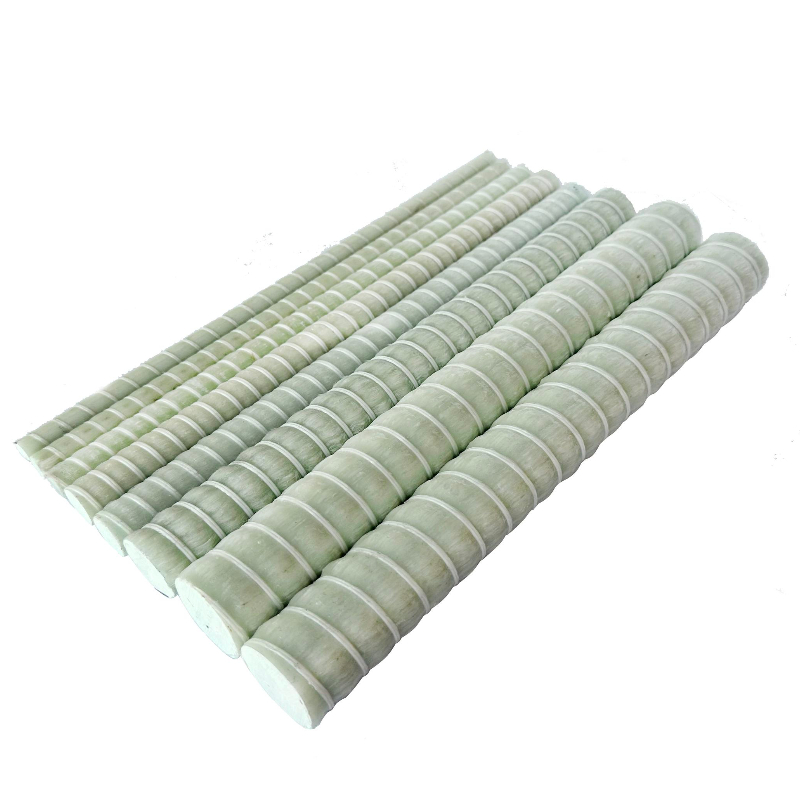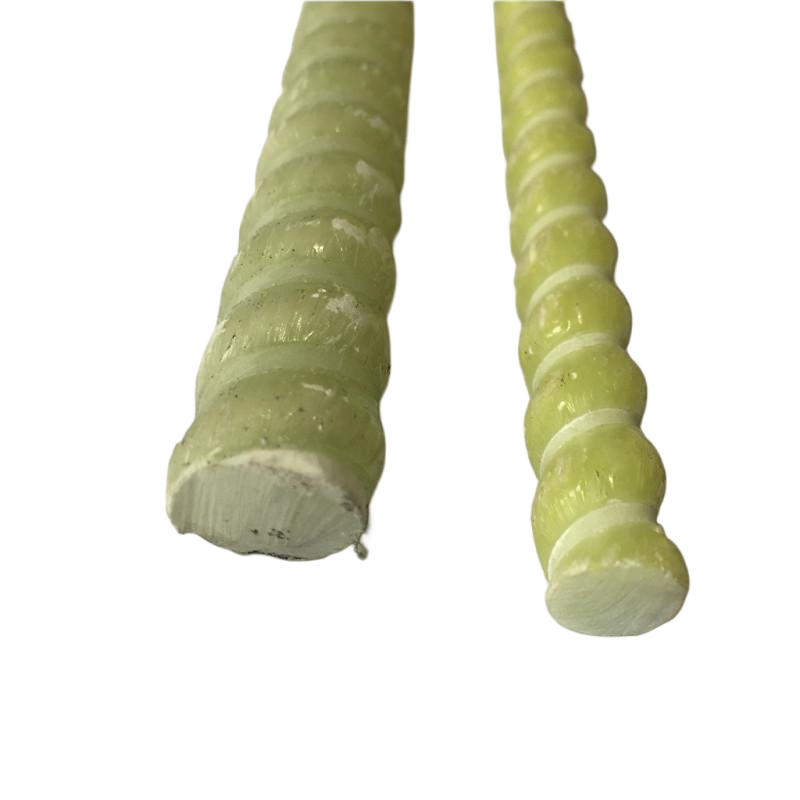Introduction
In the rapidly evolving field of modern engineering, materials that offer superior performance, durability, and cost-effectiveness are in high demand. One such material that has garnered significant attention is the Glass Fiber Reinforced Polymer (GFRP) bolt. The GFRP Bolt is redefining standards in construction and engineering projects worldwide. This article delves into the intricacies of GFRP bolts, exploring their composition, advantages, applications, and impact on the future of engineering.
Composition and Manufacturing of GFRP Bolts
GFRP bolts are composite materials made by combining glass fibers with a polymer matrix. The glass fibers provide high tensile strength, while the polymer matrix offers resistance to corrosion and chemical agents. The manufacturing process typically involves pultrusion, where continuous strands of glass fiber are impregnated with resin and pulled through a heated die to form the desired bolt shape. This method ensures uniformity, consistency, and superior mechanical properties in the final product.
Material Properties
The unique combination of materials in GFRP bolts results in a product that boasts several outstanding properties. These bolts have a high strength-to-weight ratio, making them significantly lighter than traditional steel bolts without compromising strength. They exhibit excellent fatigue resistance, low thermal conductivity, and are non-magnetic, which is crucial in sensitive electronic environments. Additionally, GFRP bolts are inherently resistant to corrosion, a common issue with metal fasteners.
Advantages Over Traditional Fasteners
When compared to conventional steel bolts, GFRP bolts offer a myriad of advantages that make them an attractive option for engineers and construction professionals.
Corrosion Resistance
One of the most significant benefits of GFRP bolts is their resistance to corrosion. Unlike steel, GFRP does not oxidize or rust when exposed to moisture, chemicals, or harsh environmental conditions. This property extends the lifespan of structures and reduces maintenance costs, particularly in marine, industrial, or humid environments where corrosion is a major concern.
Electrical and Thermal Insulation
GFRP bolts are excellent electrical insulators, making them ideal for use in electrical and electronic applications where metal fasteners could cause interference or pose safety risks. Their low thermal conductivity also means they do not conduct heat as metal fasteners do, which can be advantageous in situations where thermal bridging needs to be minimized.
Lightweight and High Strength
The lightweight nature of GFRP bolts reduces the overall weight of structures, which can lead to cost savings in transportation and handling, as well as potential design benefits in weight-sensitive applications. Despite their lightness, they offer high tensile strength, ensuring structural integrity and reliability.
Applications in Modern Engineering
The versatility of GFRP bolts has led to their adoption across various sectors in engineering and construction.
Civil Engineering Projects
In civil engineering, GFRP bolts are utilized in the construction of bridges, tunnels, and retaining walls. Their corrosion resistance is particularly valuable in structures exposed to de-icing salts or marine environments. For example, in bridge construction, using GFRP bolts can significantly extend the lifespan of the structure by mitigating corrosion-related deterioration.
Mining and Tunneling
GFRP bolts are increasingly used in mining and tunneling operations due to their high strength and non-conductive properties. They enhance safety by reducing the risk of electrical hazards and provide reliable support in rock reinforcement. Their lightweight nature also facilitates easier installation in challenging underground conditions.
Marine and Offshore Structures
Marine environments are particularly harsh on traditional materials due to high salinity and moisture levels. GFRP bolts offer an ideal solution for docks, piers, and offshore platforms where corrosion resistance and durability are paramount. Their use reduces maintenance frequency and extends the service life of marine structures.
Case Studies and Research Data
Extensive research and numerous case studies have demonstrated the effectiveness of GFRP bolts in various applications.
Bridge Reinforcement Projects
In a notable project, the use of GFRP bolts in the reinforcement of a deteriorating bridge deck resulted in a significant increase in the structure's load-bearing capacity. Over a monitoring period of five years, the bridge showed minimal signs of wear, validating the long-term performance of GFRP components in such applications.
Mining Industry Improvements
A mining operation that replaced traditional steel bolts with GFRP bolts reported a decrease in installation time by 20% due to their lighter weight. Additionally, the non-corrosive nature of GFRP increased the stability of mine shafts and reduced the frequency of required maintenance checks.
Long-term Durability Studies
Research published in the "Journal of Composites for Construction" indicates that GFRP bolts maintain their mechanical properties even after prolonged exposure to extreme environmental conditions. Tests involving cyclic loading and exposure to chemicals have shown that GFRP bolts outperform their steel counterparts in terms of longevity and reliability.
Economic Considerations
While the initial cost of GFRP bolts may be higher than traditional steel bolts, the long-term economic benefits are substantial.
Lifecycle Cost Savings
The extended lifespan and reduced maintenance requirements of structures utilizing GFRP bolts lead to significant lifecycle cost savings. These savings stem from fewer replacements, less downtime, and lower labor costs associated with maintenance activities.
Enhanced Structural Performance
By using GFRP bolts, engineers can design structures that are not only more durable but also potentially lighter, which can reduce material costs elsewhere in the project. The ability to withstand harsh environments without degradation adds value by preserving the integrity of the structure over time.
Environmental Impact
Sustainability is an increasingly important consideration in engineering projects. GFRP bolts contribute positively in this regard.
Reduced Environmental Degradation
The corrosion resistance of GFRP bolts means fewer pollutants are released into the environment over the lifespan of a structure. Unlike corroding steel, which can leach into soils and water, GFRP remains stable and inert.
Lower Carbon Footprint
The production of GFRP bolts typically results in lower CO2 emissions compared to steel manufacturing. Additionally, the reduced weight of GFRP bolts lowers transportation emissions, contributing to a smaller overall carbon footprint for projects.
Installation and Handling
Understanding the proper installation and handling of GFRP bolts is crucial for maximizing their benefits.
Installation Techniques
GFRP bolts can often be installed using the same equipment as steel bolts, but care must be taken to avoid excessive bending or impact loads that could damage the composite material. Manufacturers provide guidelines to ensure correct torque settings and installation procedures are followed.
Safety Precautions
During installation, personnel should wear appropriate protective equipment to prevent inhalation of any dust generated when cutting or machining GFRP bolts. The material is safe to handle, but standard safety practices help ensure a hazard-free work environment.
Future Developments
The use of GFRP bolts is expected to grow as technology advances and awareness of their benefits increases.
Innovations in Material Science
Ongoing research is focused on enhancing the properties of GFRP materials, such as increasing their strength and durability through the use of advanced resins and fiber treatments. These innovations will expand the applicability of GFRP bolts in even more demanding engineering scenarios.
Standardization and Codes
As adoption increases, standardized testing methods and incorporation into building codes will become more widespread. This will provide engineers and architects with the necessary confidence and guidelines to specify GFRP bolts in their designs routinely.
Conclusion
GFRP bolts represent a significant advancement in fastening technology, offering solutions to many of the limitations associated with traditional steel bolts. Their superior corrosion resistance, high strength-to-weight ratio, and durability make them an ideal choice for modern engineering projects that demand longevity and reliability. As the industry moves towards more sustainable and efficient materials, the GFRP Bolt is poised to become a staple in construction and engineering applications worldwide.




























